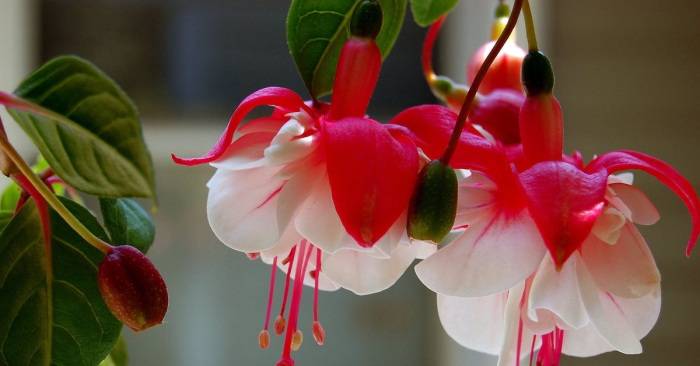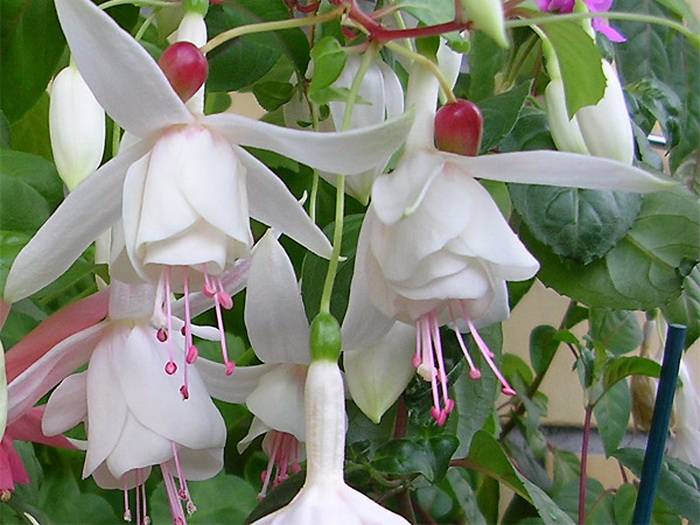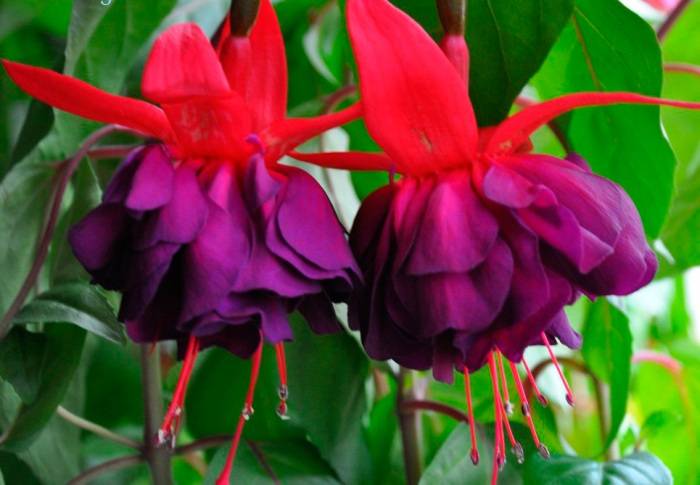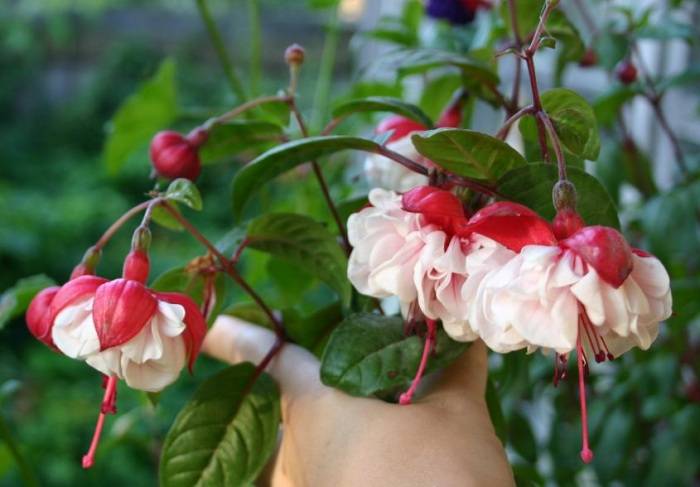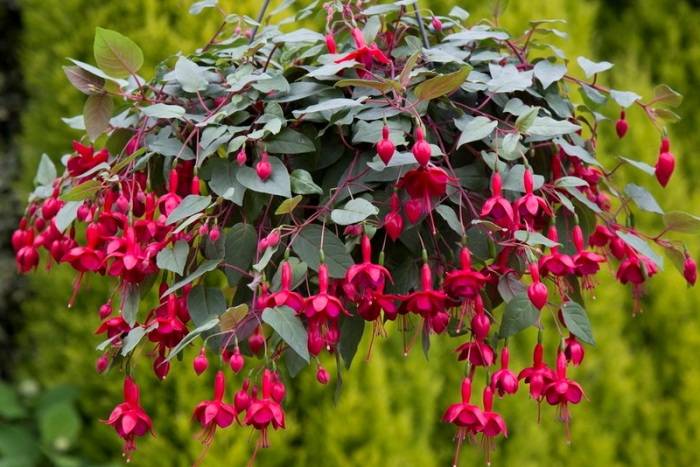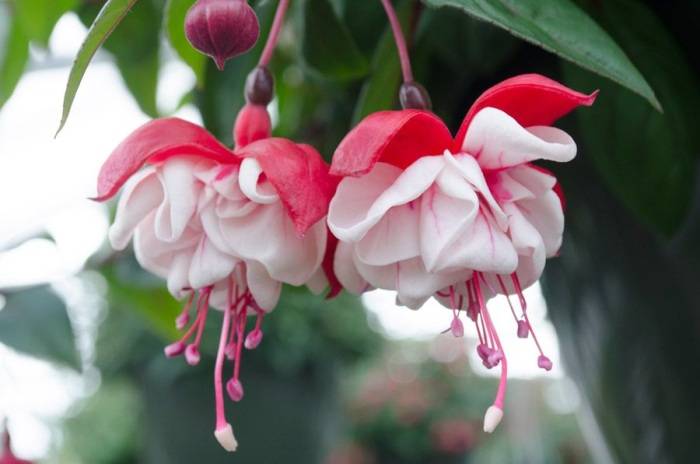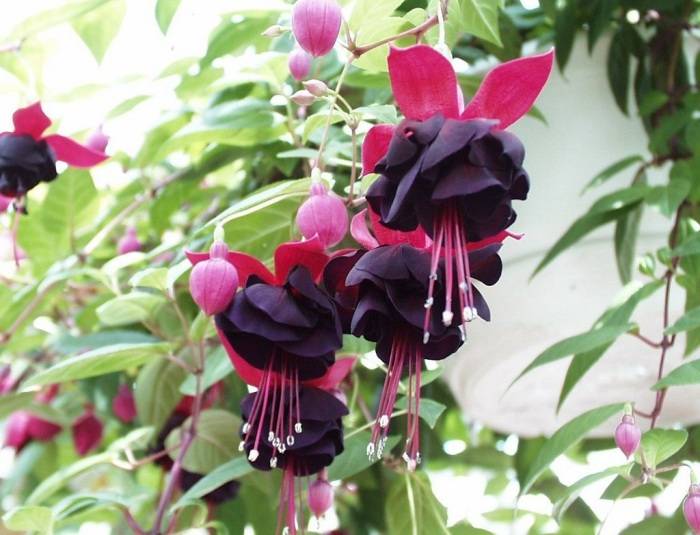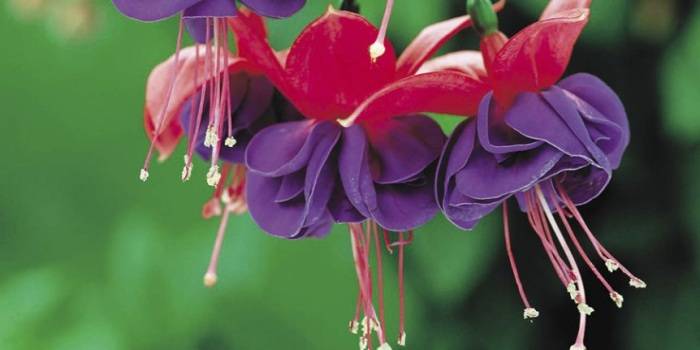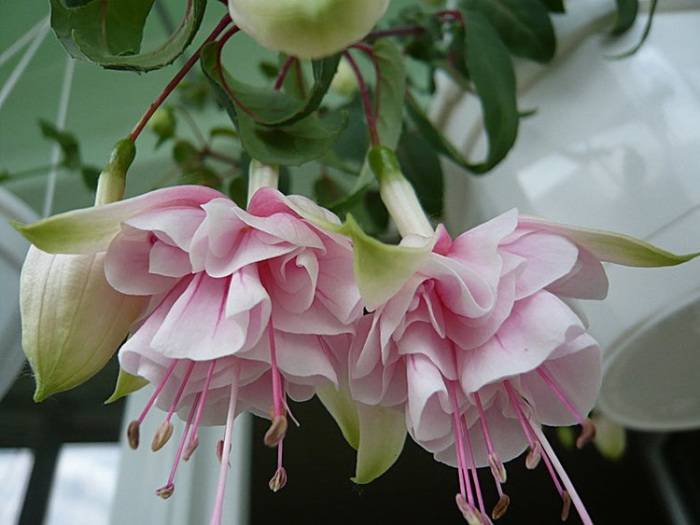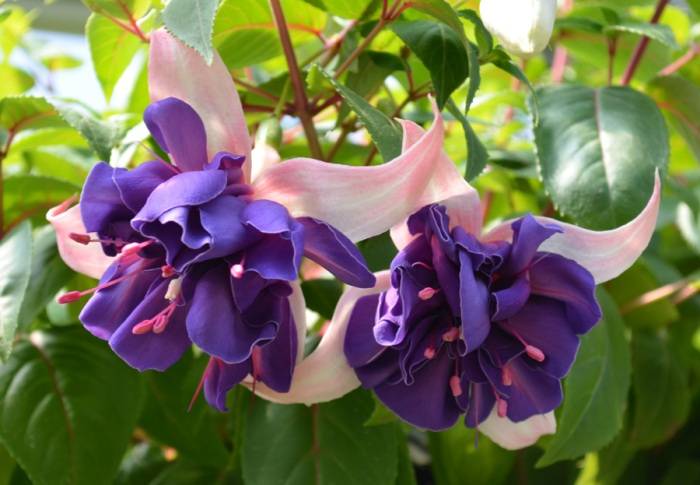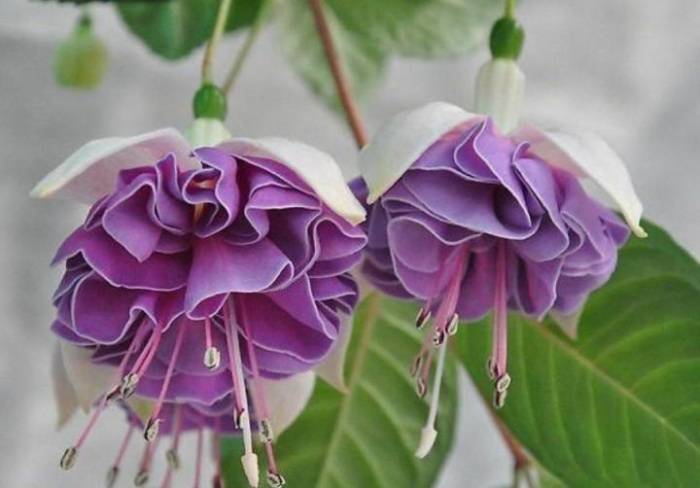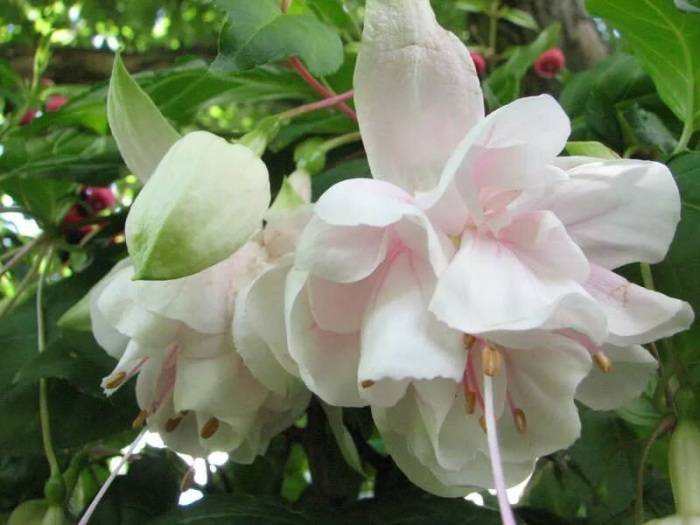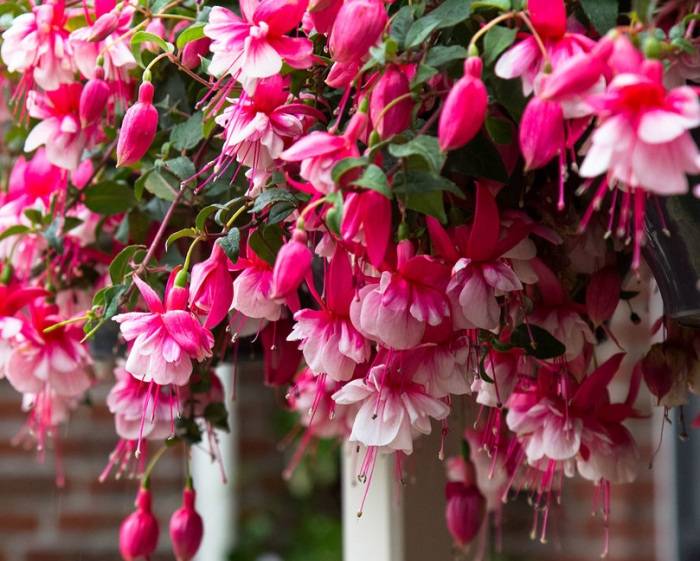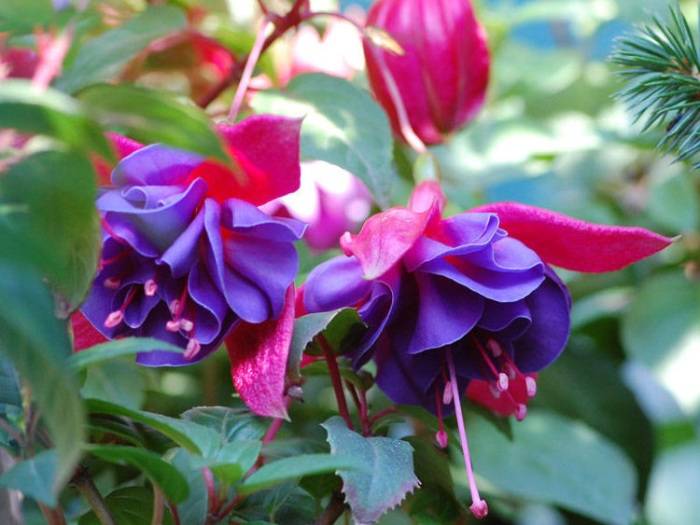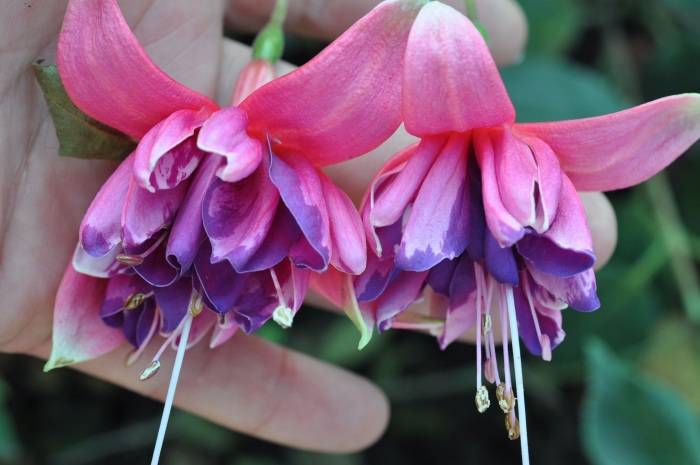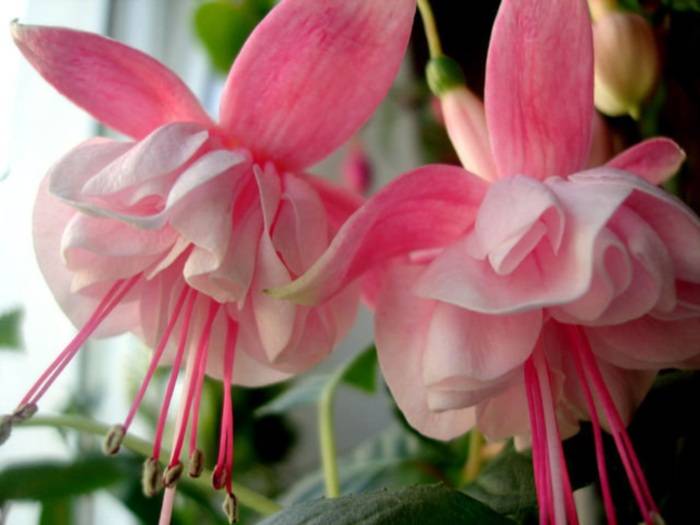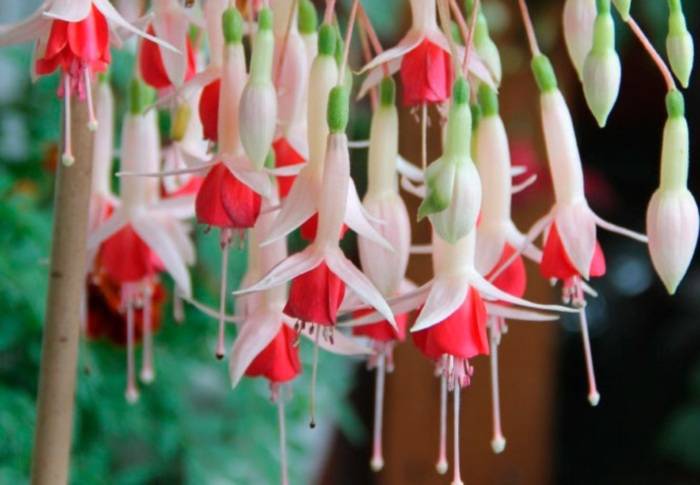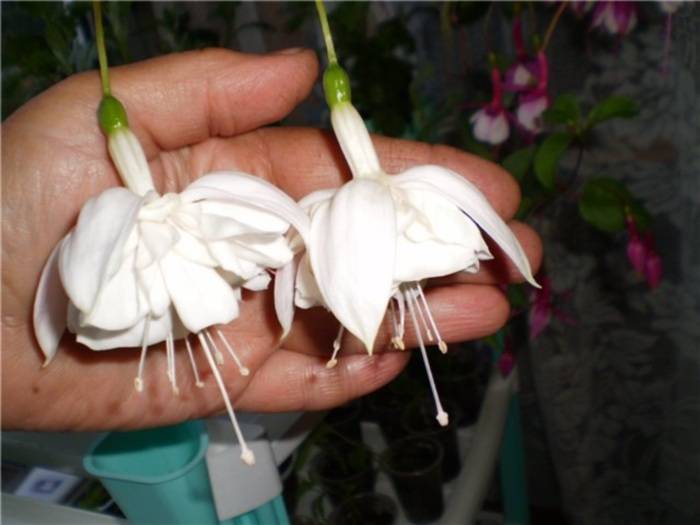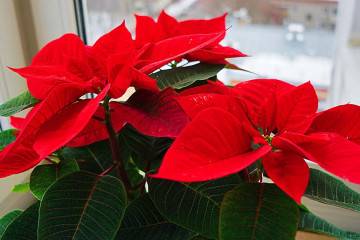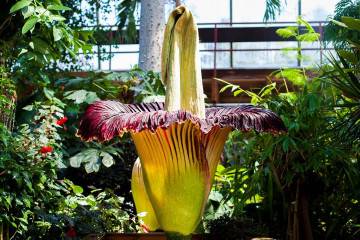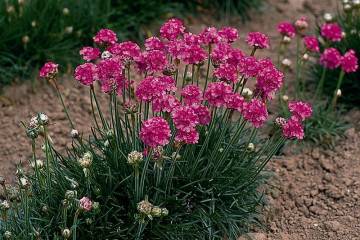Fuchsia indoor flower - plant varieties
Fuchsia is an indoor flower, an excellent plant for growing at home. She is not too demanding on the conditions of detention, so even a novice florist can take care of her. At the same time, she has a huge number of varieties, and everyone will find one that suits him.
Description of the plant
Fuchsia was discovered in 1696 by the French botanist C. Plumier. It is he who is credited with the first use of this name (after the founding father of botany, the German scientist L. von Fuchs) and he also gave the first description. However, this name was officially given to the flower only in 1753 by C. Linnaeus.
In nature, it grows in the tropical zone of Central and South America, as well as in New Zealand.
The house can grow:
- fuchsia room;
- fuchsia hybrid;
- fuchsia bush.
Fuchsia is a flower that is not particularly demanding to care for. Watering is required as the earthen coma dries up. Water less often during the rest period. During the growing season, it is necessary to introduce top dressing with a large amount of potassium.
Planting is possible in different types of soil, but a mixture of leafy soil, turf and sand is preferred. It is possible to add peat and humus.
Lighting should be good, but the plant does not tolerate direct sun.
What does a fuchsia flower look like?
It can grow in the form of a bush or small tree. There are also ampelous varieties.
The flowers themselves look very interesting. They consist of two parts - a rim and a cup. The calyx petals are longer than the corolla. The flower has long stamens sticking out of the corolla.
How many fuchsia blooms
With proper care, this plant will bloom from spring to fall. Fuchsia flowers are numerous.
Long flowering has several conditions:
- a flowering plant cannot be rotated and rearranged;
- it is necessary to apply complex fertilizers for indoor flowers with a high potassium content;
- removal of wilted flowers and resulting fruits is required;
- before flowering, the shoots are pinched to form new ones. The pinching is not done during the flowering period.
The ballerina tolerates well even strong pruning and will delight next year with abundant flowering. If you do not trim in a timely manner, there will be fewer colors. Almost 2/3 of the aerial part of the plant is removed.
Superstition: fuchsia - a widow's flower
There is a widespread superstition that fuchsia is a widow's flower or widow's tears. It is not recommended to grow it in the house, as the woman living there will become a widow. According to other beliefs, this is what the hoya is called.
At the same time, some, on the contrary, believe that it gives cheerfulness, awakens creativity, helps to find solutions to problems, develops intuition, makes women charming and irresistible.
Popular varieties
Among flower growers, the following plant varieties are in great demand.
Anabel
White variety obtained by English breeders in 1978.The flowers are double and large, as if created from expensive porcelain. In the light, the petals turn slightly pink. Therefore, if it is necessary to preserve the snowy whiteness, it is necessary to protect from direct sunlight. Fuchsia Anabel blooms for a long time. Can be formed as a standard tree.
Voodoo
One of the largest species, bred in 1953 in the United States.
The flowers are two-colored: the calyx is red, and the corolla is rich velvety purple. Red strokes on the corolla are acceptable. Fuchsia Voodoo is a bush variety that grows up to 80 cm in height. The foliage is green. Blooms early. The variety is not capricious, suitable for beginners.
Ballerina
An old variety, bred in England back in 1894. Forms small bushes, no higher than 45 cm. The formation of a standard tree is possible, but undesirable, prefers freedom.
Fuchsia Ballerina is a fast-growing, two-colored and early flowering variety. The outer petals are scarlet, and the inner ones are snow-white, slightly turning pink in the light. Easily propagated by cuttings.
Marinka
This ampelous variety was obtained in 1902 in France. Fuchsia Marinka blooms profusely with bright red flowers.
Swingtime
Fuchsia Swingtime - an exclusive species of American selection in 1955. Semi-ample form. An unpretentious variety, suitable for beginner growers.
Fuchsia whisk Swingtime (translated from English - "time to dance swing") terry white with red blotches at the base. The calyx is deep red.
Millennium
The product of the selection work of Dutch growers, fuchsia Millennium, was bred in 1999, on the eve of the new millennium, which is reflected in its name.
Large-flowered terry semi-ampelous variety. The outer petals are bright red, and the inner ones are the color of overripe cherry, almost black, velvety. The stamens are dark.
Dark eyes
Semi-ample fast-growing fuchsia Dark eyes (translated from English - "dark eyes") was bred in 1958 in the United States. Unpretentious and tenacious, suitable for beginners.
The flowers are double two-colored: red sepals and bluish-purple corolla with red stamens.
Natasha Sinton
An English variety obtained in 1990. Fuchsia Natasha Synton is a beautiful terry bush variety. The petals of the calyx are pinkish-white with green tips. The corolla is pink with purple veins. The stamens are deep pink. Blooms very profusely.
Deep purple
Bred in the USA in 1989. Fuchsia Deep purple (in the translation from English - "dark purple") can be formed both by a bush and a standard tree. It reaches a height of 35 cm. It can also be grown in hanging pots as an ampelous form.
Large and double flowers. The petals that form the calyx are white with greenish tips. The ballerina's skirt is purple with a blue tint, interspersed with white and pink flowers at the base of the petals.
Peachy
Fuchsia Peachy (translated from English - "peach") is an ampelous medium-sized plant. Blooms early, blooms profusely. Released in 1992 in the USA. The corolla is pink, gradually acquiring a peach shade, interspersed with a lighter color. The calyx is pinkish-white. Well suited for beginners, unpretentious.
Lenny Erwin
Fuchsia Lenny Erwin is a fairly young variety, was bred in 2006 in Belgium.
Has large double flowers. Corolla lilac, becomes pinkish with age. The petals of the calyx are white-green. The stamens are light crimson.
Cuttings of this variety take root quickly.
Pink Marshmello
"Pink marshmallow", and this is how the name of this species is translated - the product of the work of American breeders. Obtained in 1971 Fuchsia Pink Marshmallow has light green foliage and large delicate flowers.
The corolla is double pinkish-white. The stamens are light. Sepals are white with green and pink splashes.
Shoots reach 40 cm in length. It is grown mainly in ampelous form.
El camino
The name of this variety is translated from Spanish as "path", "road", "path". Bred by American breeders in 1955
Shoots reach a length of 30 cm, that is, El camino belongs to the medium-sized varieties. Has a semi-ampere shape.
The foliage is dark green with burgundy veins. The inner petals are white with red blotches. Sepals are light red.
Reproduces well by cuttings.
Gillian althea
Grows large, up to 50 cm, bush. Blooms profusely with double flowers. Platinum plate is deep green. The sepals are crimson, the corolla is lilac with a blue tint. There are pink strokes on the petals. Photophilous.
Royal Mosaic
"Royal mosaic" - this is how the name of this plant is translated from English. It does not exceed 35 cm and grows in ampelous form. It appeared in 1991 in the USA.
There are white blotches on the pink petals of the calyx. On a light purple corolla, strokes of the color of dawn.
The bush can be grown very quickly from a cuttings.
Rocket fire
The rocket fire has bright red sepals. The corolla petals are arranged in two rows: the outer one is light red, the inner one is blue-violet. The stamens are light.
Released in the USA in 1989
It grows as a large bush up to 60 cm high. You can form a standard tree.
Blacky
"Chernushka" or "Chernysh", as this name is translated from English, appeared in Germany in 2002.
The cup is dark crimson, sometimes even closer to the beetroot, the corolla is the color of overripe cherry, almost black.
It is grown both as a bush and an ampelous plant.
Unusual
English variety, bred in 1962. The name translates as "unusual".
Peach stamens and sepals. The tips of the outer petals are green. Corolla the color of dawn, sometimes almost white. Terry flowers.
Water nymph
The mermaid is one of the tallest varieties, up to 75 cm. This is an old English variety, bred in 1859.
The flowers are simple. The calyx and stamens are white, the corolla is scarlet. The foliage is green with red veins.
White king
The bushy form with huge snow-white flowers is a real white king among fuchsias. The color of the petals is not interspersed with other shades. This is the work of American breeders in 1968.
In general, despite the superstition, this is a wonderful flower for home growing. Most varieties reproduce well by cuttings and are easy to care for.
